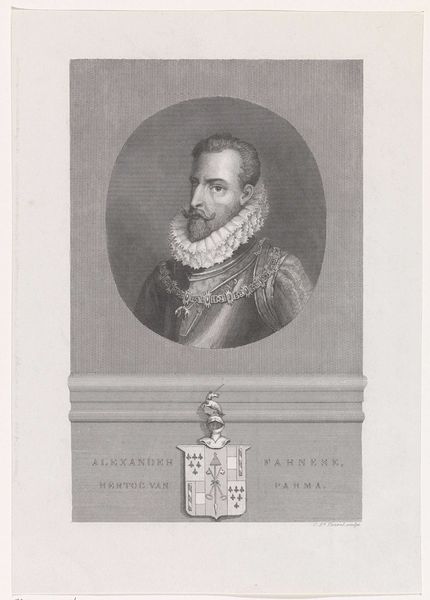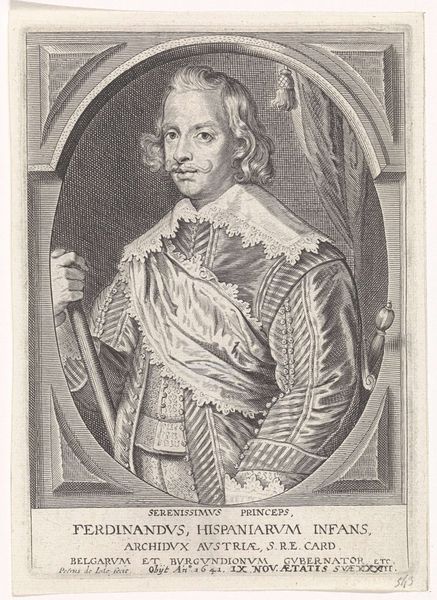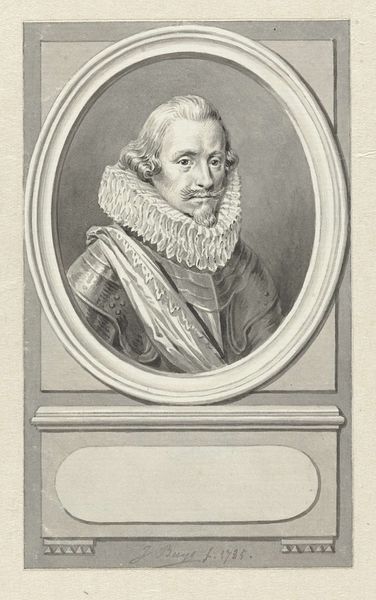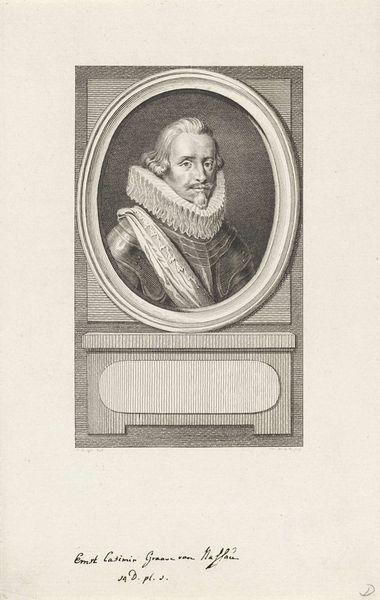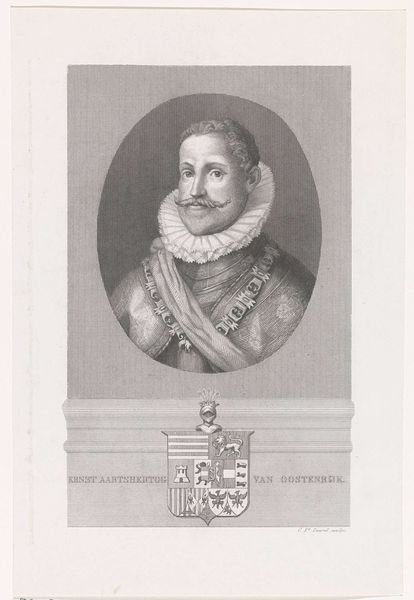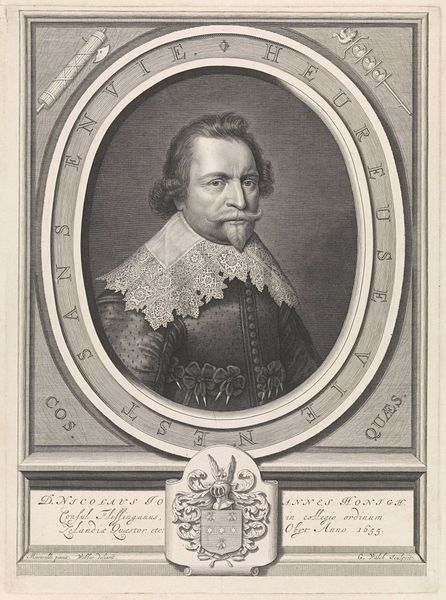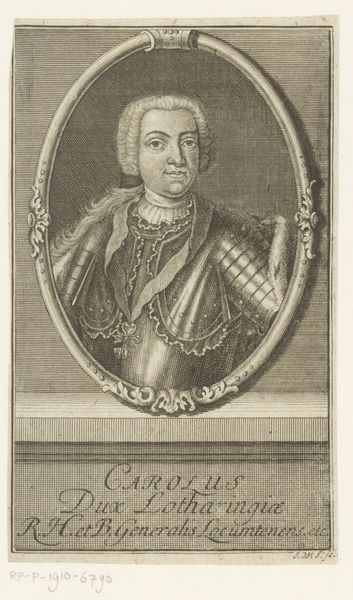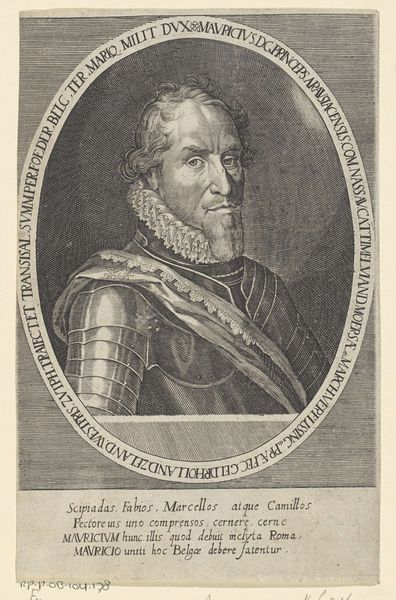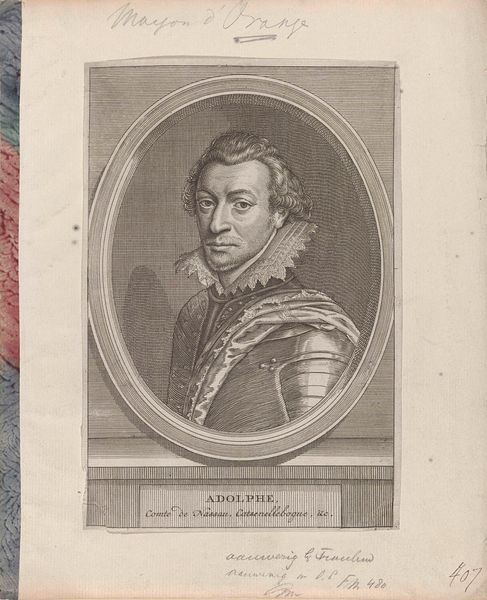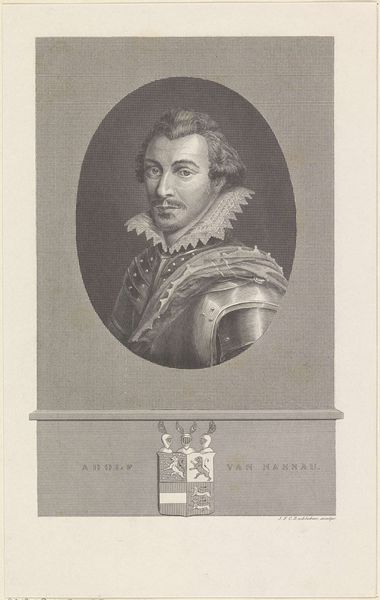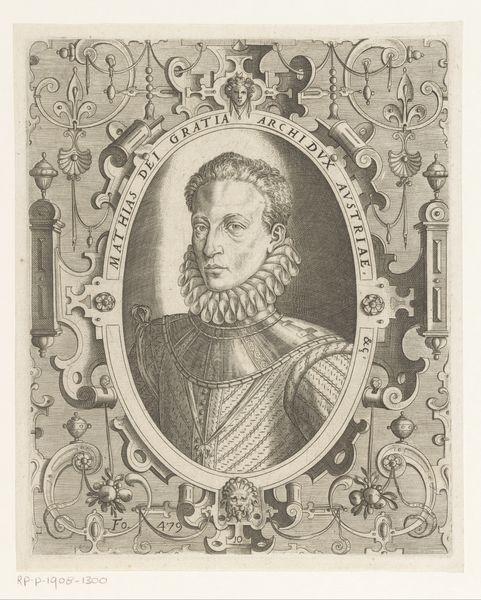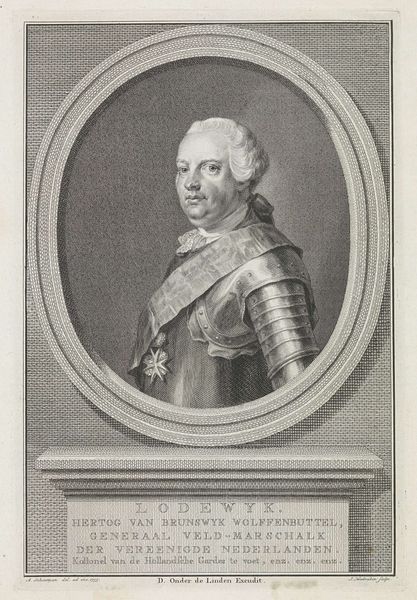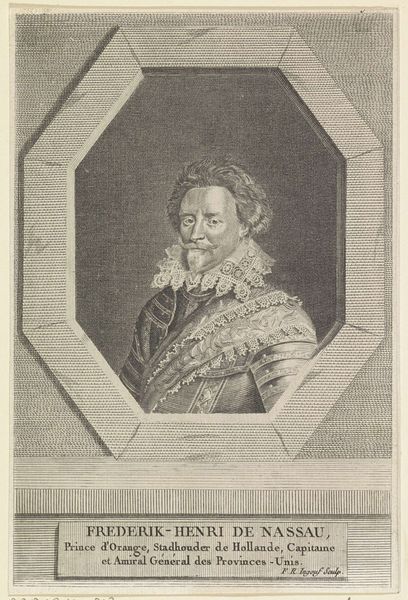
print, engraving
#
portrait
# print
#
history-painting
#
graphite
#
engraving
#
realism
Dimensions: height 292 mm, width 202 mm
Copyright: Rijks Museum: Open Domain
Curator: Here we have a piece entitled "Portret van Lodewijk, graaf van Nassau," dating from between 1840 and 1884. The work is attributed to Jan Frederik Christiaan Reckleben and is displayed here at the Rijksmuseum. Editor: Immediately striking. There’s a certain solemnity conveyed through the subject’s guarded expression, amplified by the tightly constructed oval frame. It creates a feeling of aristocratic isolation. Curator: Absolutely. Let's examine the technique. It’s a print, an engraving using graphite, exhibiting elements of realism. Note the intricate detailing in the ruff and the armor, how the artist uses cross-hatching to create depth. It is quite remarkable. Editor: While the technique is impressive, I find myself reflecting on the narrative this image evokes. Here is a man, a count, undoubtedly part of the Dutch elite, but how did he obtain that status? Who benefited from it? The image speaks volumes about inherited power, a system often built on inequality. Curator: An interesting interpretation. Formally, however, one can appreciate the play of light and shadow, the way the engraver creates a sense of volume with only a few lines. It reflects the formal academic tradition of portraiture prevalent at that time. Editor: And that formal tradition, let's be honest, served to perpetuate certain power structures, valorizing the image of the elite, like Louis of Nassau, for the gaze of posterity. Understanding that historical function, it gives the piece a completely different meaning. Who has access to being captured in such a way, and therefore, written into the annals of history? Curator: Still, the detail of the rendering, it holds its own artistic merit, don't you think? Look at the texture created within the weave of his draped garment! Editor: Yes, of course, as a skillful, period artwork— but viewing art shouldn’t stop at aesthetic appraisal. Instead, the artwork provides an entry point into thinking about issues of power, representation, and history that impact us even now. Curator: An important viewpoint; however, through appreciating Reckleben’s talent with the technique and use of tone and detail, we too, appreciate the craftsmanship and vision on display in "Portret van Lodewijk, graaf van Nassau". Editor: Exactly, may the conversations regarding historical work displayed in institutions propel viewers into further learning!
Comments
No comments
Be the first to comment and join the conversation on the ultimate creative platform.
